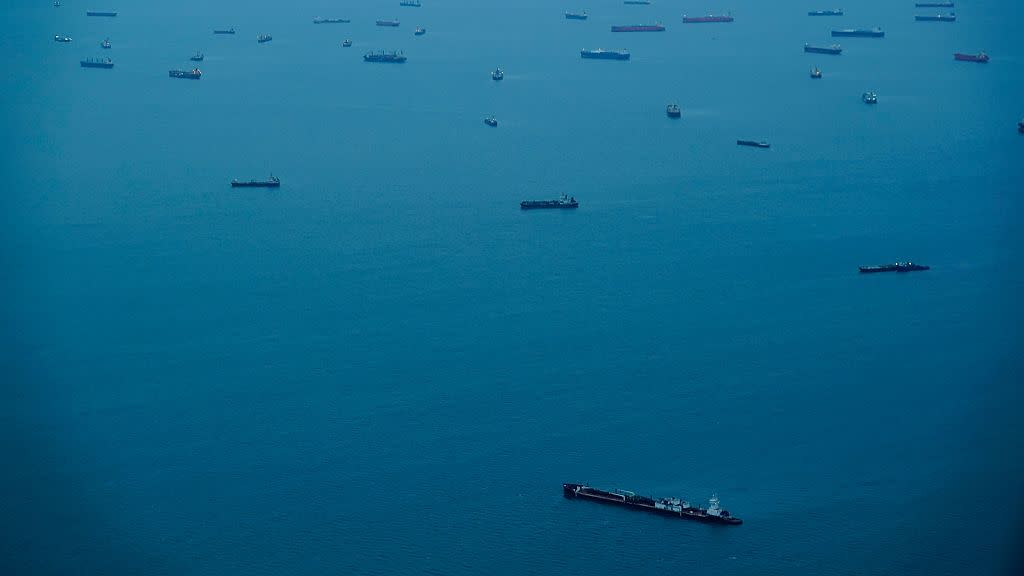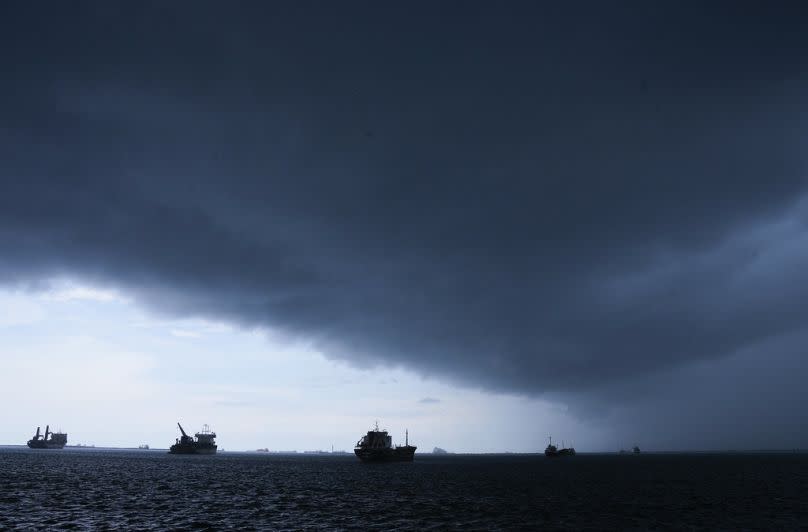El Niño not climate change key to drought that caused Panama Canal disruption, study says

The climate phenomenon known as El Niño - and not climate change - was a key driver in low rainfall that disrupted shipping at the Panama Canal last year, scientists said Wednesday.
A team of international scientists found that El Niño, a natural warming of the central Pacific that changes weather worldwide, doubled the likelihood of the low precipitation Panama received during last year's rainy season.
That dryness reduced water levels at the reservoir which feeds freshwater to the Panama Canal and provides drinking water for more than half of the Central American country.
Human-caused climate change was not a primary driver of the Central American country's unusually dry monsoon season, the World Weather Attribution group concluded, after comparing the rainfall levels to climate models for a simulated world without current warming.
Did climate change make Dubai’s deadly flooding worse? Scientists think it’s very likely
Is Russia ready for climate change? Mass floods expose lack of adaptation, campaigners say
The study has not been published in a peer-reviewed scientific journal yet but follows scientifically accepted techniques, and past such studies have frequently been published months later.
"Natural variability plays a critical role in driving many extremes," said Kim Cobb, a climate scientist at Brown University, who was not involved in the study. "This is an important reminder that climate change isn't always the answer."
What happened in Panama last year?
Panama experienced one of its driest years on record in 2023, receiving below-average rainfall for seven of the eight months of its May to December rainy season.
As a result, since last June, the Panama Canal Authority has restricted the number and size of ships passing through the Panama Canal due to low water levels in Lake Gatun, the canal's main hydrological reserve. Global shipping is still being disrupted.

To test whether climate change had a role, the team of scientists analysed weather data against computer simulations precise enough to capture precipitation in the region. Such models simulate a world without the current 1.2 degrees Celsius of warming since preindustrial times, and see how likely the lack of rainfall would be in a world without fossil fuel-charged warming.
The climate models did not show a trend similar to the drying that Panama experienced last year. In fact, many models show a wetter trend in the region due to climate change from carbon dioxide and methane emissions produced by the burning of coal, oil and natural gas.
What impact did El Niño have on rainfall?
Meanwhile, the analysis showed that El Niño reduced the 2023 rainfall by about 8 per cent, and that it's unlikely Panama would have experienced such a dry rainy season without the influence of the weather phenomenon. The researchers said increased demand for water in the region worsened the shortfall.
The group used more than 140 years of rainfall records collected from 65 weather stations - a "statistician's dream," said Clair Barnes, a researcher at Imperial College of London and one of the study's authors.
Drought, food shortages and deadly heat: El Niño has ended but its impacts are still being felt
Global warming - not El Niño - was primary cause of unprecedented Amazon drought, study finds
"So we're very confident that El Niño is driving the low precipitation," said climate scientist Friederike Otto, also of Imperial College, who coordinates the attribution study team.
The World Weather Attribution group launched in 2015 largely due to frustration that it took so long to determine whether climate change was behind an extreme weather event.
Studies like theirs, within attribution science, use real-world weather observations and computer modelling to determine the likelihood of a particular happening before and after climate change, and whether global warming affected its intensity.

